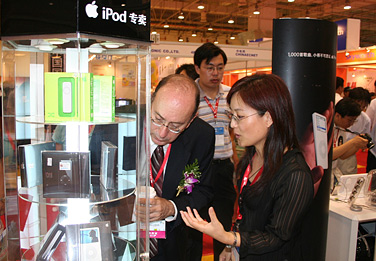|
|
|
||||||||||
|
U.S. Commercial Service Expands to China’s Second-Tier Cities
Fourteen of China’s second-tier cities account for 8 percent of China’s population but 53 percent of its total imports, which is why the untapped markets of China’s emerging cities provide some of the most exciting and lucrative opportunities for U.S. exporters. by Nicholas Monsees To help U.S. exporters reach China’s emerging markets, the U.S. and Foreign Commercial Service (USFCS) has expanded the scope of its operations to include several of China’s fastest-growing second-tier cities. USFCS now offers its services in 14 key regional hubs and emerging markets across China through its American Trading Center (ATC) program. With access to a broad cross-section of contacts, including potential agents and distributors, major end-users, and key government officials, the new initiative by USFCS has been helping U.S. companies meet the right people at the right levels to expand their businesses.
China’s unprecedented growth and the opportunities it presents are no longer a secret in the business world. Although megacities, such as Beijing and Shanghai, have long captured much of the spotlight, it is behind the scenes, in second-tier cities, where one can witness the real source of China’s economic growth. Contrary to expectations, the majority of China’s imports are not ending up in Beijing, Guangzhou, or Shanghai. Rather, a select group of 14 second-tier cities—Chongqing, Dalian, Hangzhou, Harbin, Kunming, Nanjing, Ningbo, Qingdao, Shenzhen, Tianjin, Wuhan, Xiamen, Xian, and Zhuhai—account for an astonishing 53 percent of China’s total imports, almost double the amount of the three Chinese megacities combined. Local entrepreneurs in those emerging cities are not the only ones reaping the benefits. Those cities have become importing havens, and they present lucrative opportunities, especially for U.S. companies. Perhaps the critical question for U.S. firms is not whether there is a second-tier city market, but which city is best for a particular industry or product. On-the-Ground Assistance One of the ways that the USFCS is helping U.S. companies meet potential buyers from emerging markets is by assisting them in promoting their products at trade shows in China. The USFCS offers preshow marketing assistance and briefings, as well as access to prime locations on the exposition floor as part of a “pavilion” of American companies. A spokesperson for Vweb, an exhibitor in the U.S. pavilion at the China Consumer Electronics Show (SINOCES) 2006 in Qingdao, describes how the USFCS helped introduce the company’s products into the Chinese market. “The connections, press coverage, and customer visits from SINOCES are producing good results for us, and our sales in China are growing very fast. We expect our sales in China will grow more than 100 percent next year.” Information Technology Imports on the Rise Success stories such as Vweb’s are not uncommon, especially for U.S. firms involved in China’s booming information technology (IT) sector. As China strives to diversify its manufacturing base and to move its way up the value chain, few industries show more potential for growth than IT. Much of this explosive growth is happening in the second-tier cities, with some even surpassing that of Beijing, Guangzhou, and Shanghai. One emerging city in particular, Shenzhen, has become a leading importer of IT goods. Shenzhen: A Leader in IT Imports Shenzhen, located in the southern Pearl River delta just across the border from Hong Kong’s New Territories, has been one of the fastest-growing cities in the world since its opening in the late 1970s. Once a small fishing village, Shenzhen is now the largest manufacturing base in the world and the hottest market for IT goods in China. Shenzhen’s growth in the sector is phenomenal, dwarfing that of Beijing, Guangzhou, and even Shanghai. The city now imports more integrated circuits and electrical components than any other city in China. Since 2000, Shenzhen’s annual imports of foreign electrical components and integrated circuits have grown by an astonishing 520 percent and 720 percent, respectively. Sustained Growth Foreseen Experts forecast that growth in the second-tier cities will remain strong in the coming years. What makes those emerging markets even more attractive for U.S. exporters is that they have a lower level of saturation and competition than their first-tier counterparts. Moreover, as the ranks of the middle class in those emerging markets continue to swell, so will the demand for foreign goods. The combination of those factors will continue to make second-tier cities one of the best opportunities for U.S. companies to expand their businesses in China. Nicholas Monsees is an international trade assistant with the Department of Commerce’s U.S. and Foreign Commercial Service.
|
|
